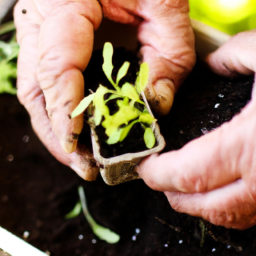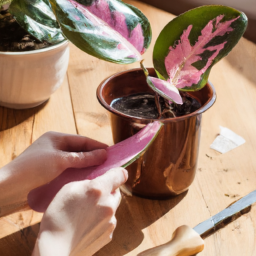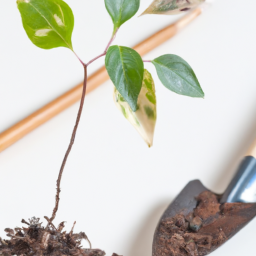
Have you ever wondered how plants are able to reproduce and grow? If so, you’re in the right place. In this blog post, we will delve into the fascinating world of plant propagation, specifically focusing on the process of going “From Leaf to Root: Mastering Plant Propagation.” Whether you’re a seasoned gardener or just starting out, understanding the art of plant propagation can be incredibly rewarding. So, grab your gardening gloves and get ready to dive into the secrets of turning a single leaf into a thriving plant.
Importance of Plant Propagation in Gardening
Gardening is not just about planting and maintaining existing plants, but also about creating new ones. Plant propagation is a crucial skill for gardeners, as it allows them to expand their plant collection, save money, and even contribute to the conservation of rare and endangered species. In this article, we will delve into the importance of plant propagation in gardening and provide you with a step-by-step guide on mastering this essential technique.
Understanding Plant Propagation
Plant propagation refers to the process of creating new plants from existing ones. It can be done through various methods, such as seed germination, division, cuttings, layering, and grafting. Each method has its advantages and is suitable for different types of plants. By mastering plant propagation, you can multiply your favorite plants, share them with friends and family, or even start a small nursery.
One of the primary benefits of plant propagation is its cost-effectiveness. Buying new plants from nurseries can be expensive, especially if you have a large garden or want to experiment with different varieties. By propagating your plants, you can save money and have a greater variety of plants in your garden.
Additionally, plant propagation allows you to preserve and propagate rare and endangered species. Many plants are at risk of extinction due to habitat destruction and over-harvesting. By learning how to propagate these plants, you can contribute to their conservation and help maintain biodiversity in your garden and beyond.
Step-by-Step Guide to Plant Propagation
Now that we understand the importance of plant propagation, let’s dive into a step-by-step guide on how to master this skill:
Step 1: Choose the Right Method
There are several methods of plant propagation, and it’s essential to choose the one that suits the plant species you want to propagate. Some plants can be easily propagated from seeds, while others require specific techniques like cuttings or grafting. Research the specific requirements of the plant you want to propagate and choose the appropriate method accordingly.
Step 2: Gather the Necessary Tools and Materials
Depending on the propagation method you choose, you will need specific tools and materials. For example, if you opt for seed germination, you will need seed trays, potting mix, and a watering can. On the other hand, if you decide to propagate through cuttings, you will need a sharp knife or pruning shears, rooting hormone, and suitable containers for the cuttings. Make sure you have all the necessary supplies before starting the propagation process.
Step 3: Prepare the Plant and Propagation Medium
Before propagating the plant, ensure that it is healthy and free from diseases or pests. If you are propagating through seeds, follow the instructions on the seed packet for optimal germination. If you are using cuttings, choose healthy stems and remove any leaves from the lower portion that may come in contact with the propagation medium.
Prepare the propagation medium, such as a well-draining potting mix or rooting medium, depending on the chosen method. Ensure the medium is moist but not waterlogged, as excessive moisture can lead to rotting.
Step 4: Execute the Propagation Method
Follow the specific steps for the chosen propagation method. If you are propagating through seeds, sow them at the appropriate depth and provide the necessary environmental conditions, such as light and temperature. If you are using cuttings, dip the cut end in rooting hormone and insert them into the propagation medium. Ensure the cuttings receive adequate moisture and light for successful rooting.
Step 5: Provide Proper Care and Maintenance
After executing the propagation method, it’s crucial to provide the newly propagated plants with proper care and maintenance. This includes regular watering, monitoring for pests and diseases, and providing suitable light and temperature conditions. Some plants may require additional care, such as misting or bottom heat, to enhance rooting.
Step 6: Monitor Progress and Transplant
Monitor the progress of the propagated plants regularly. Look for signs of new growth, such as roots or shoots, which indicate successful propagation. Once the plants have developed sufficient roots or established themselves, they can be transplanted into individual pots or directly into the garden, depending on their requirements.
Remember that plant propagation may not always be successful on the first attempt. It requires patience, experimentation, and a willingness to learn from any failures. With practice, you will become more skilled at propagating plants and enjoy the rewards of expanding your garden with your own creations.
In conclusion, plant propagation is a valuable skill for gardeners, allowing them to save money, expand their plant collection, and contribute to conservation efforts. By following the step-by-step guide provided in this article, you can master plant propagation and enjoy the satisfaction of creating new plants from leaf to root.
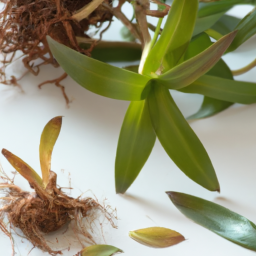
Techniques for Successful Plant Propagation
Introduction
Propagation is an essential skill for any plant enthusiast or gardener. It allows you to create new plants from existing ones, whether through seeds, cuttings, or other methods. Mastering plant propagation opens up a world of possibilities, enabling you to expand your garden or share your favorite plants with others. In this guide, we will explore various techniques for successful plant propagation, providing you with step-by-step instructions and valuable tips along the way.
1. Propagating through Seeds
Seeds are the most common and natural way to propagate plants. It is a fascinating process that allows you to witness the miracle of life firsthand. Here’s how you can successfully propagate plants through seeds:
1. Selecting high-quality seeds: Choose seeds from healthy, mature plants that exhibit desirable traits. This ensures that the offspring will inherit these characteristics.
2. Preparing the soil: Fill a seed tray or pot with a well-draining seed-starting mix. Moisten the soil and ensure it is evenly distributed.
3. Sowing the seeds: Follow the instructions on the seed packet for the appropriate depth and spacing. Gently press the seeds into the soil and cover them lightly.
4. Providing optimal conditions: Place the seed tray in a warm and well-lit area, but avoid direct sunlight. Maintain consistent moisture levels by misting the soil regularly.
5. Transplanting the seedlings: Once the seedlings have developed their first set of true leaves, carefully transplant them into individual pots or the garden bed. Harden them off gradually before exposing them to the outdoor environment.
2. Propagating through Stem Cuttings
Stem cuttings are another popular method for propagating plants, especially those that do not produce viable seeds or have desirable traits that you want to preserve. Follow these steps for successful stem cutting propagation:
1. Selecting the right stem: Choose a healthy and disease-free stem from the parent plant. It should be semi-hardwood, neither too young nor too old.
2. Preparing the cutting: Using clean and sharp pruning shears, make a diagonal cut just below a node. Remove any lower leaves, leaving only a few at the top.
3. Applying rooting hormone (optional): To enhance root development, you can dip the cut end of the stem in a rooting hormone powder or gel. This step is particularly useful for more challenging or slow-rooting species.
4. Planting the cutting: Fill a pot with a well-draining rooting medium, such as a mix of perlite and peat moss. Make a hole in the soil with a pencil or your finger and insert the cutting, ensuring that at least one node is buried.
5. Providing the right environment: Place the pot in a warm and bright location, but avoid direct sunlight. Maintain high humidity by covering the pot with a clear plastic bag or using a propagator. Mist the leaves regularly to prevent dehydration.
6. Monitoring and transplanting: Check for root development by gently tugging the cutting after a few weeks. Once roots have formed, transplant the cutting into a larger pot or the garden bed, following the specific requirements of the plant species.
3. Propagating through Division
Division is an effective method for propagating plants that naturally produce multiple stems or clumps. It is particularly useful for perennials and grasses. Follow these steps to successfully propagate plants through division:
1. Selecting the right time: Division is best done in spring or early fall when the plant is actively growing but not in full bloom. Choose a cool and cloudy day to minimize stress on the plant.
2. Preparing the plant: Water the plant thoroughly a day before dividing it to ensure the roots are well-hydrated. Gently remove the plant from the ground or pot, shaking off excess soil.
3. Dividing the plant: Use a sharp and clean gardening tool, such as a knife or spade, to separate the plant into smaller sections. Each section should have its own set of roots and shoots.
4. Replanting the divisions: Dig a hole in the desired location and place the divided sections, ensuring that the roots are spread out and covered with soil. Water the newly planted divisions thoroughly.
5. Providing aftercare: Keep the soil consistently moist for the first few weeks to help the divisions establish themselves. Mulching around the plants can help conserve moisture and suppress weed growth.
Conclusion
Mastering plant propagation opens up a world of possibilities for gardeners and plant enthusiasts. Whether you choose to propagate through seeds, stem cuttings, or division, each technique offers its own unique set of challenges and rewards. By following the step-by-step instructions provided in this guide, you can confidently embark on your propagation journey and enjoy the satisfaction of creating new plants from existing ones. Remember to be patient, observe your plants closely, and adapt your techniques as needed. Happy propagating!
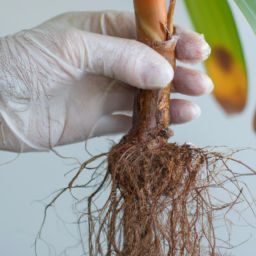
Common Mistakes to Avoid in Plant Propagation
Introduction
Plant propagation is an exciting and rewarding process that allows you to expand your garden or indoor plant collection. Whether you are a beginner or an experienced gardener, it’s important to be aware of the common mistakes that can hinder the success of your plant propagation efforts. In this article, we will explore three common mistakes and provide you with practical tips to avoid them. So let’s dive in and master the art of plant propagation!
1. Neglecting Proper Sanitation
When it comes to plant propagation, cleanliness is of utmost importance. Neglecting proper sanitation practices can lead to the spread of diseases and pests, resulting in the failure of your propagation attempts. To ensure success, always start with clean and sterilized tools, containers, and growing mediums.
First and foremost, clean your tools before and after each use. Use a mild detergent or soap to remove any dirt or debris, and rinse them thoroughly. For sterilization, you can soak your tools in a solution of one part bleach to nine parts water for about 10 minutes, then rinse them again. This will help prevent the transmission of pathogens from one plant to another.
Similarly, containers and growing mediums should be clean and free from any pathogens. If you are reusing containers, wash them with soap and water, and consider sterilizing them with a bleach solution as well. When it comes to growing mediums, using a sterile mix or pasteurizing it before use can significantly reduce the risk of diseases.
2. Overwatering or Underwatering
Watering is a critical aspect of plant propagation, and finding the right balance can be challenging. Overwatering or underwatering can both have detrimental effects on the success of your propagation attempts. It’s important to understand the specific water requirements of the plant species you are propagating.
Overwatering can lead to root rot and the development of fungal diseases. To avoid this, make sure the growing medium is well-draining and not constantly saturated. Allow the top inch of the soil to dry out before watering again. Additionally, avoid using excessively large pots that can retain too much water, as this can drown the young roots.
On the other hand, underwatering can cause dehydration and hinder root development. Monitor the moisture levels of your growing medium regularly and water when it feels slightly dry. Be mindful of the specific needs of each plant species, as some may require more frequent watering than others.
3. Ignoring Temperature and Light Requirements
Temperature and light are crucial factors that influence the success of plant propagation. Ignoring these requirements can lead to slow growth, weak plants, or even plant death. It’s essential to provide the right conditions for your propagated plants to thrive.
Different plant species have different temperature preferences, so it’s important to research and understand the ideal temperature range for successful propagation. Generally, most plants prefer temperatures between 65°F and 75°F (18°C to 24°C). Avoid exposing your propagated plants to extreme temperatures or drafts, as this can stress them and hinder their growth.
Light is equally important for plant propagation. While some plants require direct sunlight, others thrive in partial shade. Understanding the light requirements of the plant species you are propagating will help you provide the appropriate amount of light. Consider using grow lights or placing your plants near a window with the right exposure to ensure they receive adequate light for healthy growth.
Conclusion
By avoiding these common mistakes in plant propagation, you can significantly increase your chances of success and enjoy the rewarding experience of growing new plants. Remember to prioritize cleanliness and sanitation, find the right balance in watering, and provide the optimal temperature and light conditions for your propagated plants. With these tips in mind, you’ll be well on your way to mastering plant propagation and expanding your green thumb!
In Summary
Plant propagation is an essential skill for any green thumb enthusiast, allowing them to expand their garden without breaking the bank. From leaf to root, understanding the ins and outs of plant propagation is key to mastering this art. Whether you’re a seasoned gardener or just starting out, this blog post will guide you through the process, step by step.
To begin, let’s talk about leaf propagation. This method involves taking a leaf cutting from a mature plant and encouraging it to grow roots and eventually become a new plant. It’s a great way to propagate plants that don’t produce seeds or have difficult germination requirements. We’ll cover the different types of leaf cuttings, such as stem and leaf petiole cuttings, and provide tips on how to ensure success. Moving on to root propagation, we’ll explore the fascinating world of root cuttings. This technique involves taking a section of root from a parent plant and encouraging it to grow into a new plant. We’ll discuss the best time to take root cuttings, how to prepare them for propagation, and the ideal conditions for root growth. By understanding the process from leaf to root, you’ll be well on your way to mastering plant propagation and expanding your garden with ease.
Check Out These FAQs:
Q1: What is ‘From Leaf to Root: Mastering Plant Propagation’?
A1: ‘From Leaf to Root: Mastering Plant Propagation’ is a comprehensive guidebook that teaches you the art and science of propagating plants. It covers various techniques and methods to successfully grow new plants from leaves, stems, and roots, enabling you to expand your plant collection and create lush green spaces.
Q2: Who is this book suitable for?
A2: This book is suitable for both beginners and experienced gardeners who have a passion for plants and want to learn the secrets of plant propagation. Whether you have a small balcony garden or a large backyard, this book will equip you with the knowledge and skills to propagate a wide variety of plants and enhance your gardening expertise.
Q3: What topics does the book cover?
A3: ‘From Leaf to Root: Mastering Plant Propagation’ covers a range of topics including the basics of plant propagation, different propagation techniques such as leaf cuttings, stem cuttings, and root cuttings, understanding plant hormones and their role in propagation, troubleshooting common issues, and tips for successful propagation. It also provides detailed instructions and step-by-step illustrations to help you master each technique.
Q4: Can I propagate any plant using the methods mentioned in the book?
A4: While the book covers a wide range of plants that can be propagated using various techniques, it’s important to note that not all plants can be successfully propagated in the same way. Some plants may require specific conditions, such as temperature, humidity, or soil type, for successful propagation. The book provides guidance on which techniques work best for different types of plants, helping you make informed decisions and increase your chances of success.
Q5: Where can I purchase ‘From Leaf to Root: Mastering Plant Propagation’?
A5: ‘From Leaf to Root: Mastering Plant Propagation’ is available for purchase at leading bookstores, online retailers, and through the author’s website. You can also check with your local library to see if they have a copy available for borrowing.
Dr. Olivia Green is a botanist with over two decades of experience in indoor plant cultivation. She holds a Ph.D. in Plant Biology and has dedicated her career to researching plant behavior in controlled environments. Dr. Green is passionate about helping plant enthusiasts master the art of indoor gardening through her extensive knowledge and practical insights.

